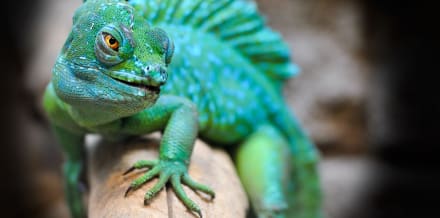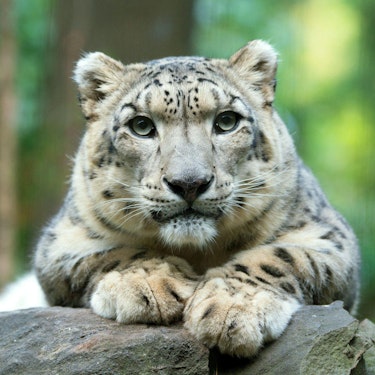More about: Animals at the NYC Bronx Zoo
If you're spending a few days in New York and have plenty of free time, I recommend a visit to the Bronx Zoo. Located in the north of Manhattan, inside Bronx Park, it is the largest urban zoo in the United States and is home to some 6,000 animals belonging to 700 different species. There is a reason why this visit is one of the things to see and do in New York.
The curious thing about this zoo is that it took advantage of its great extension to reconstruct the habitats of the animals that inhabit it on its grounds. This way they were able to reduce the use of cages and mix different species that could live together to create an environment similar to the one they would have in the wild. Would you like to meet some of them before visiting the Bronx Zoo? Keep reading!
The bald eagle
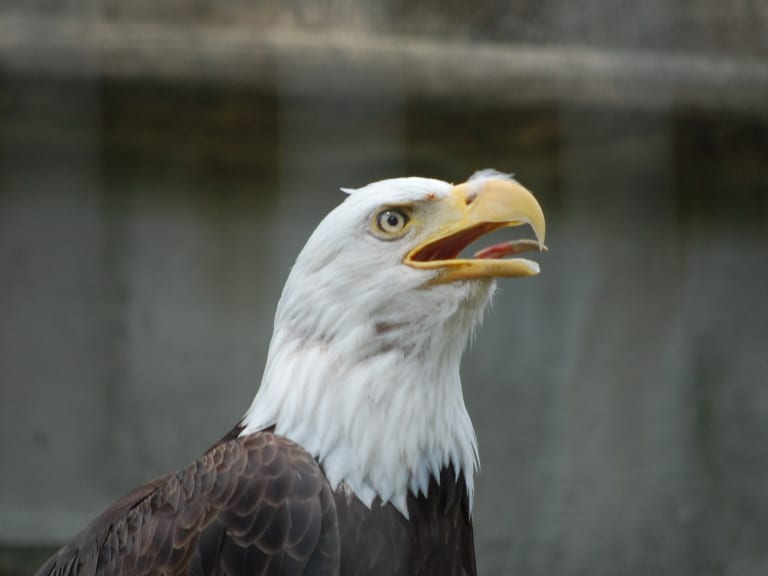
At the Bronx Zoo you can see bald eagles, a North American bird of prey that is well known for being the national symbol of the United States, appearing on the country's national coat of arms.
At the end of the 20th century, bald eagles were on the verge of extinction, but fortunately the population has recovered and has grown throughout much of the country.
They are characterised by their white feathered head and tail, brown body and large yellow beak, eyes and legs.
Bald eagles live in forests near water areas such as lakes and coasts, where they may eat fish. However, they also hunt small mammals and may even feed on carrion.
You can see bald eagles at the Bronx Zoo in the Birds of Prey exhibit.
California sea lion
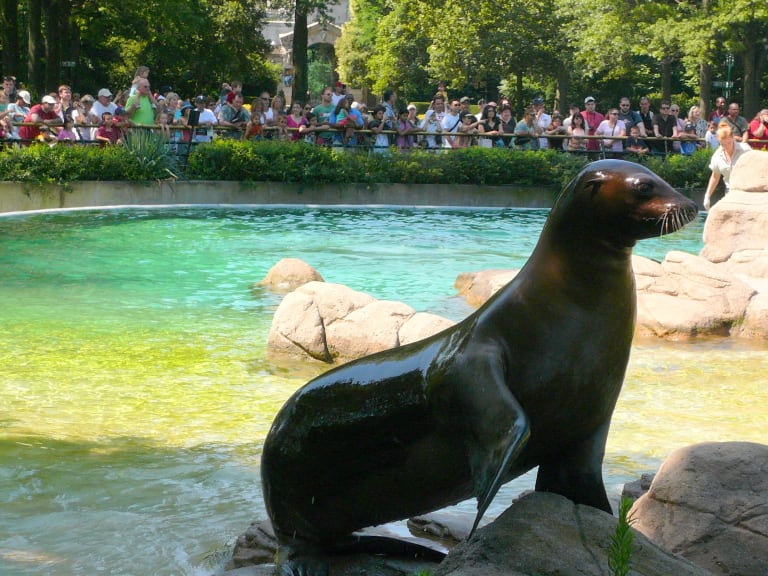
California sea lions were one of the first species acquired by the Bronx Zoo back in 1899. Since then they have become one of the most popular with visitors.
They are often confused with seals but differ from them in that they have ears and can move well on land because their hind limbs rotate forward.
During the 19th century, sea lions were heavily persecuted as their meat and blubber were highly sought after. Fortunately, their population has recovered.
They feed on fish, octopus and squid and are known for their intelligence and ability to play and communicate. At the Bronx Zoo you can see these animals in the Sea Lion Pool exhibit.
The grizzly bear
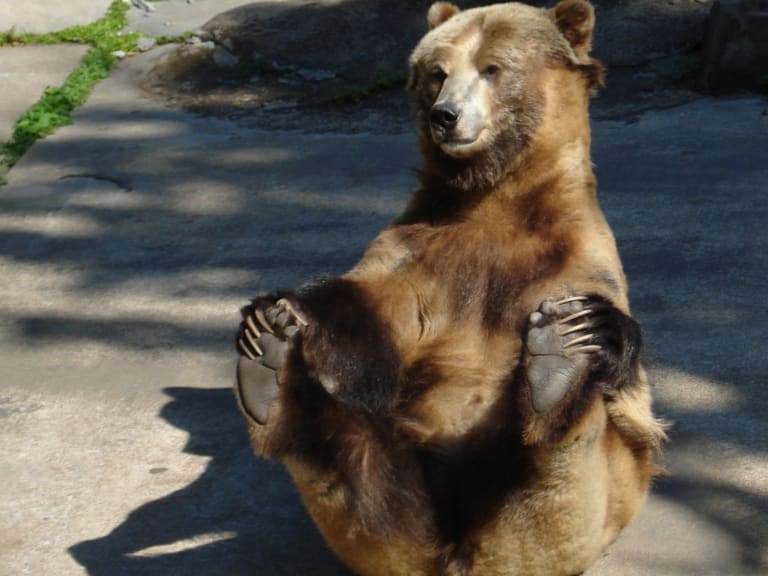
The grizzly bear is one of the most loved animals by visitors to the Bronx Zoo and also one of the fiercest! In the wild, some of them were orphaned and were rescued and transferred to this zoo so that they could lead a better life.
In captivity, grizzlies love to swim, stretch, wrestle with each other and eat the treats that keepers prepare for them, while in the wild they live in the rocky areas of the United States and usually feed on fish and vegetables. In fact, they have a snout more sensitive than a hound's and can detect food from several kilometres away.
They are a subspecies of the grizzly bear that can measure 2 metres and their name "grizzly" comes from the silver fur on their backs.
The North American porcupine

Another of the most curious animals you'll see at the Bronx Zoo is the North American porcupine, also known as the urson, which lives in the forests of the northwestern United States, Alaska and Canada.
It is an animal that attracts a lot of attention because its body is covered with 30,000 quills that it uses together with its strong smell to scare away its enemies.
The North American porcupine can inhabit forests, prairies or deserts and spends most of its time in trees because they are good climbers. They feed on shoots, roots, bark and leaves. They are solitary creatures with nocturnal habits and can be seen at the Bronx Zoo in the Children's Zoo exhibit.
The red panda

At the Bronx Zoo you can see red pandas, cute animals native to Asia that live in the Himalayas, northern Burma and central China.
They were once considered to be related to panda bears and raccoons but today they form their own family, the ailurids. Red pandas are solitary and shy animals that spend most of their time up in the trees.
In the wild, they are most active at night and at dawn, when they forage for food. They love bamboo, fruit, shoots and eggs but can also catch insects.
At the Bronx Zoo you can see the red panda in the Himalayan Highlands exhibit alongside the snow leopard and white-naped crane.
The gorilla

One of the coolest exhibits at the Bronx Zoo is the Congo Gorilla Forest where you can see these intelligent and imposing creatures that are among the closest "relatives" of humans.
Gorillas live in the tropical forests of the Congo, the green heart of the African continent. Gorilla tribes number around 5 to 10 individuals and consist of a dominant silverback male, his harem and offspring.
They feed mainly on tender shoots, fruit, roots and the bark and pulp of trees, although they may also eat termites.
In captivity, they learn to communicate with sign language and are also able to use tools to obtain food. Watching them interact and play is always exciting!
Poison dart frog
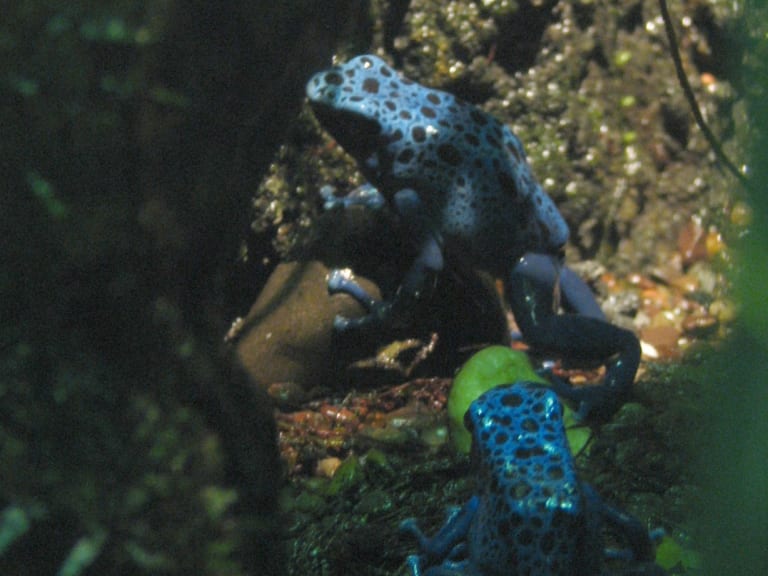
Poison dart frogs are famous for the bright colour of their skin that warns predators of their high toxicity. Did you know that these amphibians get their name from the ancient Native American tribes, who rubbed the tips of their arrows on the frogs' backs to impregnate them with their poisonous secretions before hunting?
Poison dart frogs inhabit the rainforests of Central and South America and feed on a variety of insects such as ants, termites, fruit flies, young crickets and tiny beetles, to which scientists attribute the frogs' toxicity.
At the Bronx Zoo you can see these colourful amphibians in the World of Reptiles exhibition, where you can also see other species such as Cuban crocodiles, anacondas, blue iguanas and giant river turtles.
The American alligator

Another of the species you can see in the World of Reptiles exhibit at the Bronx Zoo is the American alligator, a species more than 150 million years old that was once on the verge of extinction. Fortunately, the population has recovered and is thriving today.
American alligators are excellent swimmers and feed on turtles, snakes, fish and small mammals. They inhabit the southeastern United States, in the rivers, swamps and freshwater marshes of Louisiana, Mississippi and Florida.
Southern white rhinoceros

Although this species is known as the southern white rhinoceros, it is actually grey rather than white. It gets its name from the word "wyt" which in the Afrikaans language means wide, referring to the size of its mouth.
It is a semi-social and territorial animal that lives mainly in South Africa, although it also lives in the savannahs of Kenya, Namibia and Zimbabwe.
They love to take mud baths to regulate their temperature and protect their skin from the sun and insects. The southern white rhino is the only species not listed as endangered but poaching for its prized horn (which is said to have aphrodisiac properties) is a serious threat they face.
At the Bronx Zoo you can see them in the Zoo Center exhibit.
The Komodo dragon

Have you ever seen the world's largest lizard? At the Bronx Zoo you will have the opportunity to meet the Komodo dragon, an animal that in captivity can reach 3 metres in length and weigh more than 130 kilos. It is really impressive!
This creature is characterised by its rough skin of different colours (grey, blue, green or orange), its muscular tail and its long claws. Their saliva is also venomous, although they rarely capture live prey. They tend to feed especially on carrion.
Like the white rhinoceros or the giant Aldabra tortoise, the Komodo dragon lives in the Zoo Center at the Bronx Zoo, the heart of the zoo since 1908.
How much do tickets to the Bronx Zoo cost?

The best way to visit the Bronx Zoo is to purchase a Bronx Zoo Admission ticket from 25 Euros for adults (over 13 years old) and 20 Euros for children (3 to 12 years old), which gives you access to the zoo and unlimited admission to the attractions available on the day of your visit.
However, there are other options for getting to know the park. If you want to know more about ticket prices, I recommend you read the post Bronx Zoo ticket prices. In it I also explain when you can get in for free and what the reduced rates are like so you can save a little bit on your visit.
What time does the Bronx Zoo open?
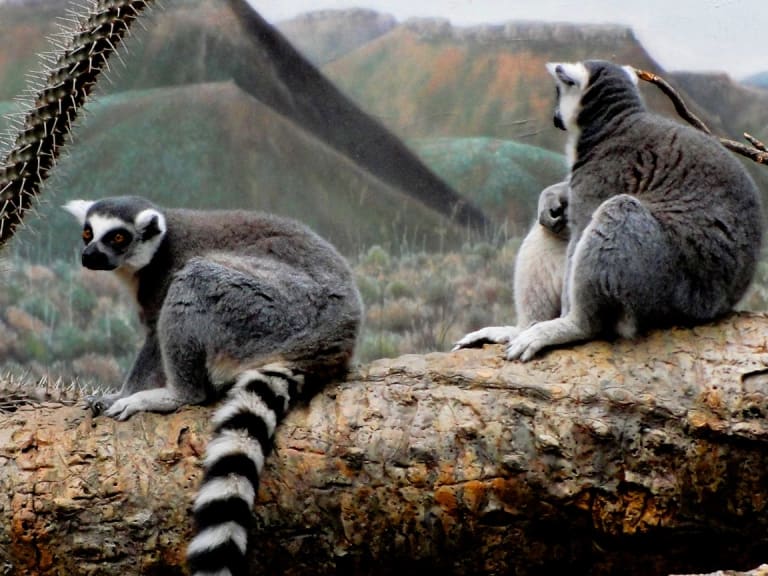
To plan your visit to the Bronx Zoo and your subsequent activities in the city you will need to know its opening hours. The park opens at 10 AM Monday through Sunday.
Depending on the time of year, the zoo closes at 4:30 PM in the cooler months or 5:30 PM in the warmer months.
Other interesting facts about the Bronx Zoo

After seeing the wonderful animals you can find at this zoo you won't be able to resist booking a place to visit during your stay in New York. You already know the prices and opening hours, but we want to make it even easier for you by reminding you of some interesting details.
How to get to the Bronx Zoo
The quickest way to get to the Bronx Zoo is to take a taxi or public transport. If you're on a budget, I recommend taking the underground (lines 2 or 5 to E. 180th St.) or the express bus (line BxM11 from Manhattan and get off at the Bronx River entrance to the park). Here is a guide to the New York underground that you may find useful.
As the saying goes, "all roads lead to Rome" (in this case to the Bronx!) but not for the same money. Of the above, the underground is the cheapest option (a single ticket will cost you about 2.50 euros) while the express bus ticket costs a little more (about 5 euros ). Keep this in mind when planning your visit!
How long does a visit to the Bronx Zoo usually take?
Visits to the Bronx Zoo usually last 2-3 hours although it's so big that you'll need at least half a day to see it in its entirety.
If you want to know more about when is the best time to see the park, how long you can stay there or when it closes, I suggest you read the post Bronx Zoo opening hours.
Where to eat at the Bronx Zoo?
As once inside the zoo there is no time limit to stay, you may lose track of time when you're busy viewing the park's exhibits. If you skip lunch and suddenly your stomach is growling like a lion's, don't worry because you won't have to leave the zoo for lunch - there are plenty of options for snacking here!
From stalls and carts where you can buy a quick snack to satisfy your appetite (Zoo Bites, Zoo Brews, etc.) to restaurants where you can take a long break and enjoy a tasty meal a la carte (Dancing Crane Café or Asia Café). There are even picnic areas where you can have a small picnic inside the zoo if you bring your own food - you choose what you fancy!
